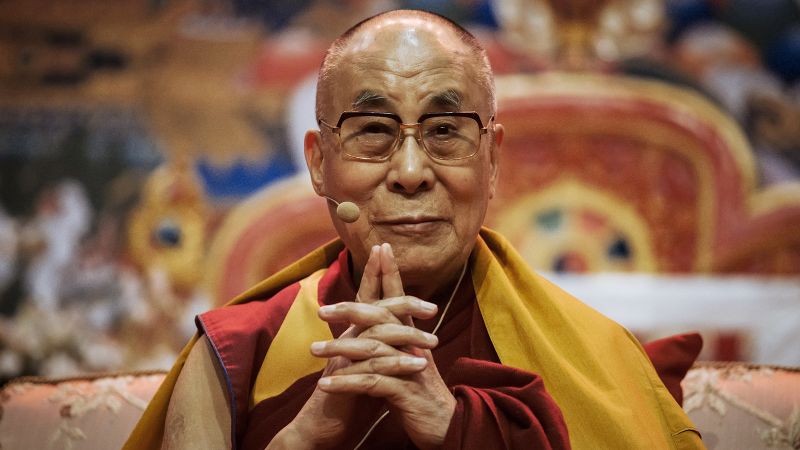As the Dalai Lama approaches his 90th birthday this Sunday, the revered spiritual leader of Tibetan Buddhism is preparing for what could be his final confrontation with Beijing: the contentious issue of his reincarnation. The Dalai Lama, who has long been a symbol of Tibet’s struggle for autonomy under Chinese rule, announced on Wednesday that he will have a successor after his death, and that his office will have the sole authority to identify his reincarnation.
“I am affirming that the institution of the Dalai Lama will continue,” he declared in a video message to religious leaders gathered in Dharamshala, India, where he has resided since fleeing Tibet in 1959 following a failed uprising against Chinese control. This announcement underscores the ongoing tension between the Tibetan spiritual leader and the Chinese Communist Party, which insists it has the authority to appoint the next Dalai Lama.
The Spiritual and Political Stakes
The cycle of rebirth is central to Tibetan Buddhist belief, with revered masters like the Dalai Lama believed to choose their place and time of rebirth to benefit all beings. However, the reincarnation of the Dalai Lama has evolved into a geopolitical issue, with implications extending beyond Tibet to the broader Himalayan region.
“He has been such a magnet, uniting all of us,” said Thupten Jinpa, the Dalai Lama’s longtime translator. “One day, when the rock goes away, what are we going to do?” Jinpa’s words reflect the deep emotional and spiritual connection many Tibetans have with their leader, who has become a symbol of their cultural and religious identity.
“Before Communist China gets involved in the business of recognizing the reincarnation of lamas, including the dalai lama, it should first recognize the reincarnations of its past leaders Mao Zedong and Deng Xiaoping!” – Dalai Lama in “Voice for the Voiceless”
Historical Context and Beijing’s Strategy
The Dalai Lama, born Tenzin Gyatso, was only 15 when Chinese communist troops entered Tibet in 1950, claiming to “liberate” it from feudalism. The subsequent resistance culminated in the 1959 uprising, after which the Dalai Lama fled to India. Since then, he has been a steadfast advocate for Tibetan autonomy, espousing a “middle way” approach that seeks genuine autonomy rather than full independence.
Despite Beijing’s efforts to discredit him, the Dalai Lama remains a potent symbol for Tibetans. The Chinese government has attempted to co-opt Tibetan Buddhism by promoting lamas loyal to its rule, including installing its own Panchen Lama in 1995. This move was in defiance of the Dalai Lama’s choice and has been a source of contention ever since.
“Despite all these years of banning his photos, in every Tibetan heart there is an image of the Dalai Lama there. He is the unifying figure, and he is the anchor.” – Thupten Jinpa
The Future of Tibetan Leadership
The Dalai Lama’s death could present a dilemma for both Tibetans and Beijing. Some younger Tibetans in exile view his conciliatory approach as overly accommodating, and without his unifying presence, calls for full independence may gain traction. Meanwhile, Beijing is likely to attempt to appoint its own Dalai Lama, potentially leading to two rival figures.
“For us, the one recognized by the Dalai Lama, born in exile, is the real one,” said Lobsang Sangay, former prime minister of the Tibetan government-in-exile. This sentiment underscores the potential for a schism within Tibetan Buddhism, as well as the broader geopolitical implications.
Implications and the Path Forward
As China continues to assert its influence in Tibet and beyond, the Dalai Lama has been preparing his people for a future without him by strengthening democratic institutions within the Tibetan exile community. In 2011, he transferred political power to a democratically elected leader, ensuring that Tibetans can continue their struggle for autonomy independently.
Under Xi Jinping, Beijing has intensified efforts to assimilate ethnic minorities and align religious practices with Communist Party values. This has included closing Tibetan language schools and promoting a “sinicized” version of Buddhism. Despite these challenges, many Tibetans remain hopeful that the Dalai Lama’s legacy will endure.
“If we can get our act together and the dalai lama institution continues with a new dalai lama being discovered, the power of the symbol will be maintained,” Jinpa concluded, emphasizing the enduring spiritual and cultural significance of the Dalai Lama for Tibetans worldwide.
